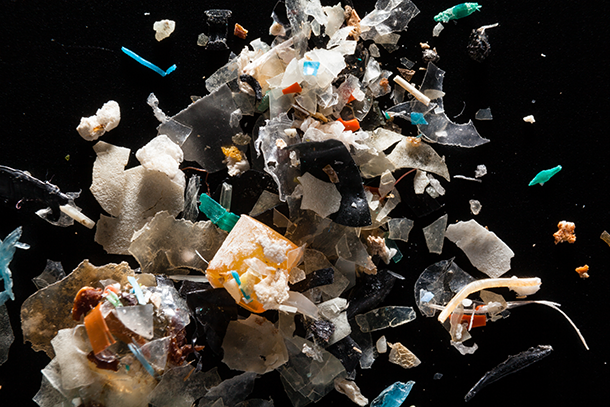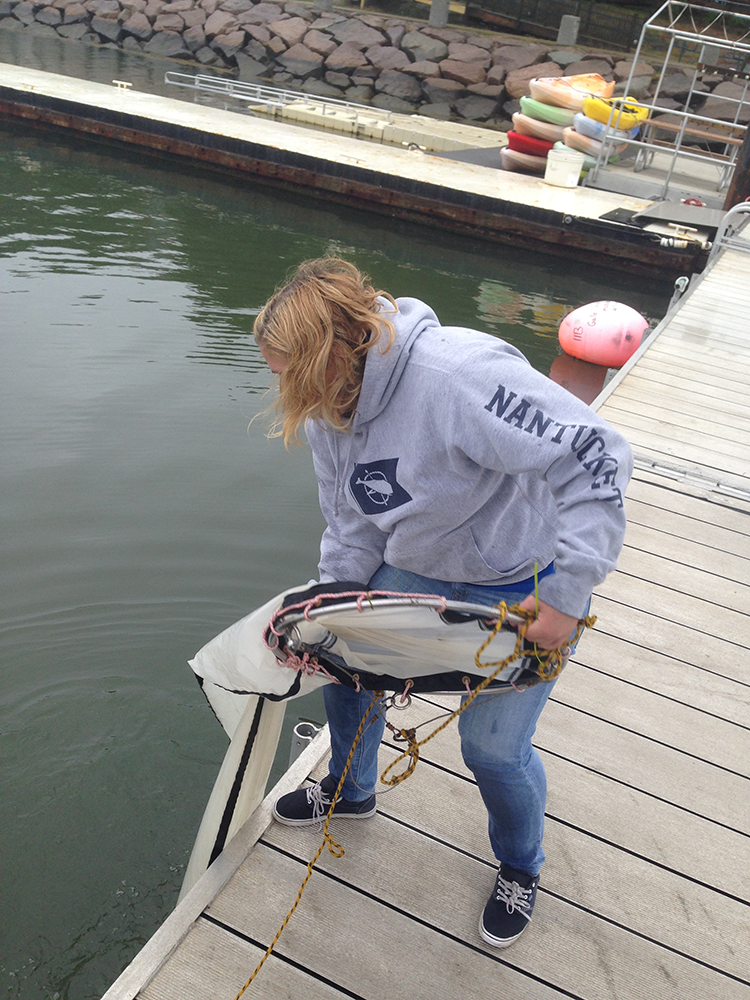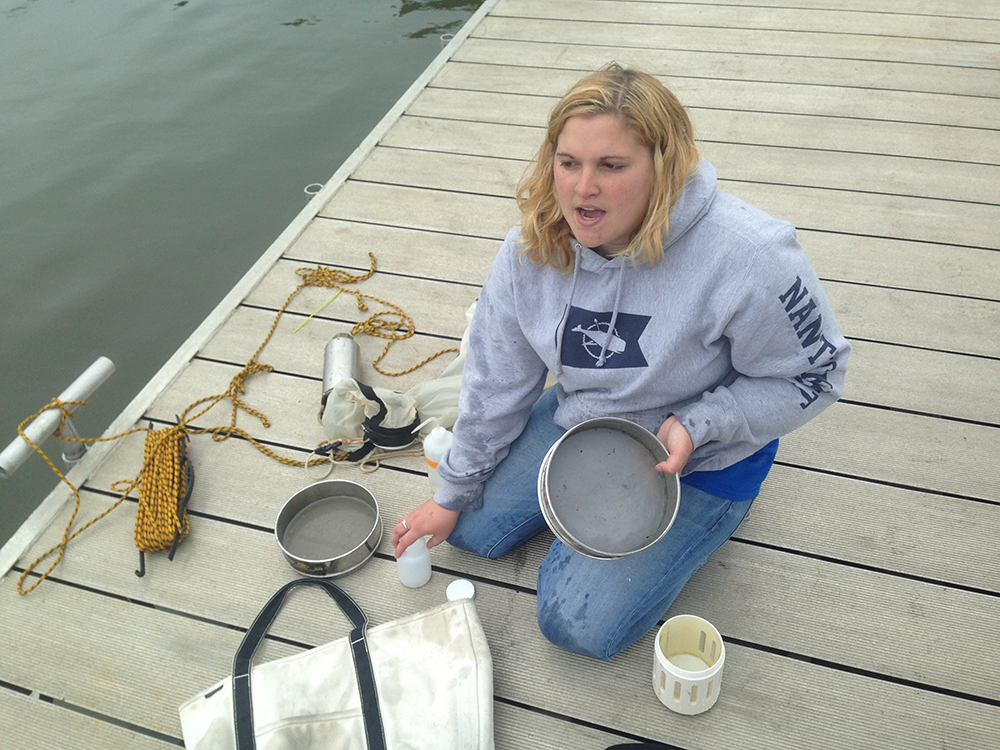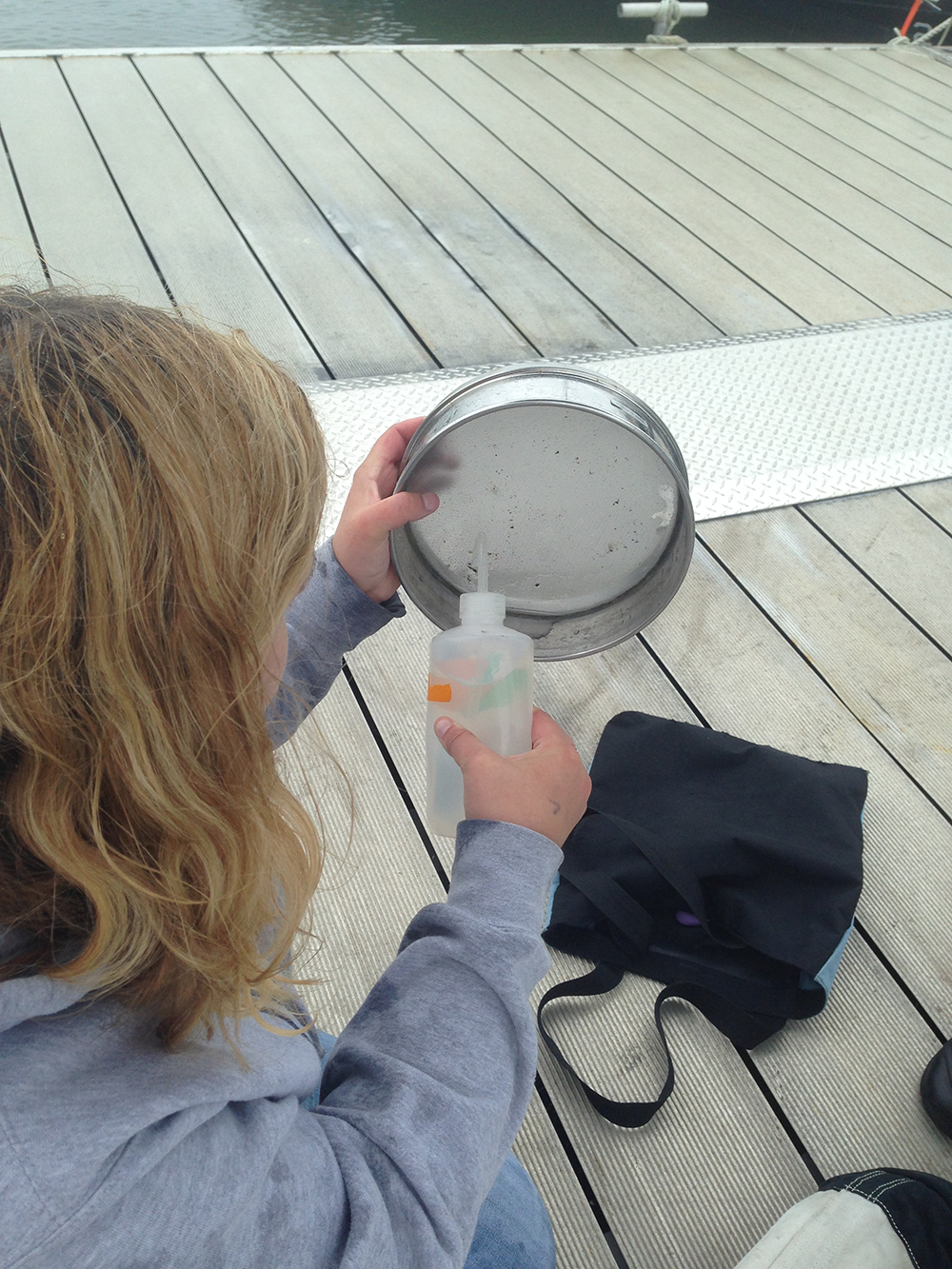Testing Boston Harbor for Plastic
Air Date: Week of June 5, 2015

Microplastic particles found in Chesapeake Bay (Photo: Chesapeake Bay Program, CC BY 2.0)
Boston Harbor has undergone a historic cleanup over recent decades, but little is known about the nature of pollution from microplastics. These tiny plastic particles are everywhere in the world’s oceans, and scientists believe they’re a major threat to wildlife and human health. UMass Boston graduate student Tyler O’Brien tests the waters for these particles down at Savin Cove and explains the process, and how it could help us better understand the extent of microplastic pollution.
Transcript
CURWOOD: Well, the next generation of marine leaders is taking on part of this challenge, by trying to understand the levels of plastics in Boston Harbor. The once notoriously polluted harbor has undergone an impressive cleanup in recent years, but there isn't much information on the extent of microplastic pollution. Still, there are eager graduate students at the University of Massachusetts Boston working to change that.
[SOUND OF WAVES LAPPING ON A DOCK IN BOSTON HARBOR]
O'BRIEN: My name is Tyler O'Brien. I am a graduate student here at the University of Massachusetts Boston and I'm in the Marine Science and Technology's Masters. We are going to sample for microplastics here in Savin Hill Cove. Microplastics are pieces of plastics that are five millimeters in length or shorter, and they come from land-based sources, such as larger plastic, such as bags, bottles, everything that we have wrapped in plastic. And they can come into the water from land-point sources, rivers, streams, rain events. Plastic doesn't necessarily decompose, but it just breaks down through sunlight and wave energy. They can also just be from personal care products that are already small, like toothpaste and facial cleansers that have those little microbeads in them.

UMass Boston graduate student Tyler O’Brien gets a sample from Boston Harbor using a plankton net tow. (Photo: John Duff)
[OCEAN WAVES LAPPING ON THE DOCK]
Microplastics have been proven to have horrible effects for the environment and potentially human health. Microplastics will be ingested by small animals, and then those animals are eaten by larger animals, and it just moves its way up through the food web in the ocean. And a lot of those animals we are actually eating as consumers. So there are potential health hazards because of the chemicals that leach out of plastics.
The last five, ten years is really the only literature that's out there, and I think it still has a very long way to go to actually grasp how much is actually in our waters, how the abundance of microplastics. There's been research in the gyres and the great garbage patches and now it's really, what about our coastlines, where all the stuff is probably entering? So there's a lot of unknowns, but I think that we're in a really cool position to start really understanding it.
Today I just have a plankton net tow, so plankton talking about the little species in our water, and I am going to just take a plankton net tow to get the fixed volume, to see if there's microplastics in this sample. I'm going to do a one meter net tow today just to what's on the surface of the water, the water column. Alright. Here it goes.

Tyler explains how she’s going to treat her water sample to test for microplastics. (Photo: John Duff)
[METAL CLANK AND SPLASH]
O'BRIEN: So I just lower the net to the depth I want. Right at the one-meter mark and I just pull up.
[WATER SPLASHING]
O'BRIEN: There it goes. Now, with the sample I just collected, I have two metal sieves. One is 300 micrometers and the other is 63 micrometers. And I'm just going to pour the sample throughout the two different sieves that are stacked on top of each other and that will give me different size fractions of plastic, and why this is important is because I'm really trying understand the abundance, the composition, and the different sizes, maybe, throughout the water column. The size in general is important because zooplankton can feed on the smaller microplastics, which are usually 63 microns in size, and that just goes for further implications: well, maybe these plastics are moving up our food webs in the ocean, and plankton is the basis of all life in the ocean. Everything feeds off something that's fed off plankton, or they feed on plankton. Whales feed directly on plankton, and they're one of the largest animals, so just imagine the amount and concentration that can be going through the food web.

Tyler filters out larger particles before sending the sample to the lab. (Photo: John Duff)
Once I collect my sample I'll be going to my lab, and I am going to digest any biological material that might be on plastic, and it'll just leave me the plastics or other things that could be in the sample, could be glass or other materials like that. And from there, I'm going to further analyze it with instruments that will tell me the actual chemicals, or the composition of that specific plastic. So I can hopefully identify them further.
So, right in this sample right here, a lot of that floating debris is actually zooplankton and other phytoplankon species. So zooplankton are animals and phytoplankton are plants, but if you can see deep in the sample there, there is a blue speck. What it is, I'm not sure, but if I had a guess it's probably a piece of plastic of some sort. I am trying to get a baseline understanding of what our microplastic issue might be in Savin Hill Cove, and more, Boston Harbor in general. But just having the small sample area just to get the preliminary work down will be very important, probably, for future research and other people taking on similar projects.
CURWOOD: That’s UMass Boston graduate student Tyler O’Brien, testing the water for micropollution in Boston Harbor’s Savin Cove.
Links
Invisible Ocean, an online short documentary about the ocean’s plastic problem
Living on Earth wants to hear from you!
Living on Earth
62 Calef Highway, Suite 212
Lee, NH 03861
Telephone: 617-287-4121
E-mail: comments@loe.org
Newsletter [Click here]
Donate to Living on Earth!
Living on Earth is an independent media program and relies entirely on contributions from listeners and institutions supporting public service. Please donate now to preserve an independent environmental voice.
NewsletterLiving on Earth offers a weekly delivery of the show's rundown to your mailbox. Sign up for our newsletter today!
 Sailors For The Sea: Be the change you want to sea.
Sailors For The Sea: Be the change you want to sea.
 The Grantham Foundation for the Protection of the Environment: Committed to protecting and improving the health of the global environment.
The Grantham Foundation for the Protection of the Environment: Committed to protecting and improving the health of the global environment.
 Contribute to Living on Earth and receive, as our gift to you, an archival print of one of Mark Seth Lender's extraordinary wildlife photographs. Follow the link to see Mark's current collection of photographs.
Contribute to Living on Earth and receive, as our gift to you, an archival print of one of Mark Seth Lender's extraordinary wildlife photographs. Follow the link to see Mark's current collection of photographs.
 Buy a signed copy of Mark Seth Lender's book Smeagull the Seagull & support Living on Earth
Buy a signed copy of Mark Seth Lender's book Smeagull the Seagull & support Living on Earth

